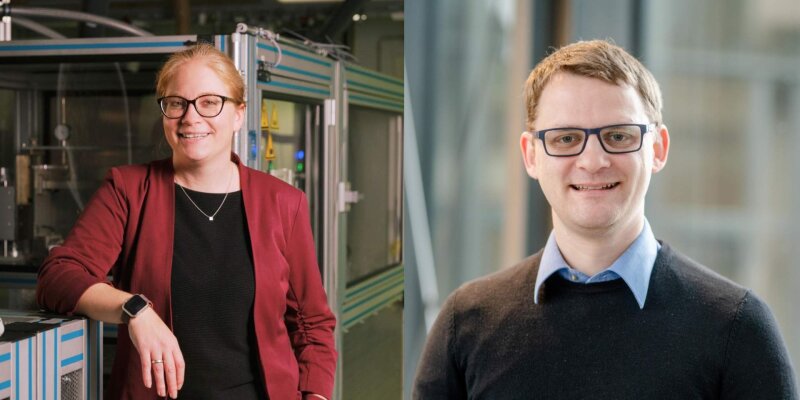UA Ruhr News Center
10. 09. 2024
Guidance for the development of new materials
UA Ruhr researchers are laying the foundations for hydrogen production on an industrial scale.
By 2030, the German government wants up to 50 percent of Germany's hydrogen requirements to be produced in the country. To achieve this, an electrolysis capacity of one million kilowatt hours and the scaling up of high-tech devices from ideal laboratory conditions to real industrial scales are required. For the first time, researchers from the University of Duisburg-Essen, Ruhr University Bochum, the Center for Fuel Cell Technology, the Fraunhofer Institute for Environmental, Safety and Energy Technology UMSICHT and the Max Planck Institute for Chemical Energy Conversion have now been able to show how new materials for electrochemical processes can be identified on a laboratory scale and then transferred to an application-oriented system. Their material development guide was recently published in Carbon Energy*.
Electrolyzers are devices used to break down a substance into its components. In hydrogen production, for example, electricity is used to split a water molecule into two hydrogen atoms and one oxygen atom. Catalysts are required to initiate and accelerate this reaction. However, despite extensive efforts to develop such catalysts, it has not yet been possible to produce materials for widespread use in industry. “In practice, the materials must not only work in the laboratory, but also under real industrial conditions - and for at least ten years. In view of the variety of potential materials and different test methods, however, the selection is becoming increasingly difficult,” as first author Dr. Philipp Gerschel from Ruhr University Bochum (RUB) emphasizes.
“Using the example of alkaline oxygen development, we focus in the article on the transition from basic research to application maturity,” explains Prof. Dr. Ulf-Peter Apfel (RUB/Fraunhofer UMSICHT). Oxygen evolution is a partial reaction of hydrogen production - and at the same time a weak point in catalyst development, as the composition of the catalyst surface changes during the process, which impairs its catalytic properties.

Screening of possible materials
“In this context, we have developed a coherent workflow for the rapid screening of a variety of possible anode materials, which enables a reliable comparison of materials across different research groups,” explains Prof. Dr. Doris Segets from the University of Duisburg-Essen. “The workflow can be used for various AEM electrolysis tests and also captures information on the electrode structure as a link between material data and electrochemical parameters.” AEM electrolysis is a new process for producing hydrogen that does not require precious metals as catalysts.
Outstanding cooperation within the UA Ruhr competence field “Materials Chain”
This process could significantly advance catalyst development and enable the widespread production of electrolyzers within ten years. The comprehensive process for identifying and systematically transferring the materials to industrial scale is the result of an outstanding collaboration between researchers from the UA Ruhr's Materials Chain competence field. In 2021, the participating scientists Doris Segets, Phillipp Gerschel and Ulf-Peter Apfel, together with other cooperation partners, funded the project “DIMENSION: Determining materials for energy conversion - Establishing a fast track towards processing and evaluation” at the Mercator Research Center Ruhr, from which the results now published emerge.
A total of 18 researchers from the University of Duisburg-Essen, the Center for Fuel Cell Technology at Ruhr University Bochum, Fraunhofer UMSICHT and the Max Planck Institute for Chemical Energy Conversion from various disciplines, from chemistry to process engineering, are involved in the DIMENSION project. The project was funded with € 1.8 million for three years in the “Excellence” funding line.
* Link to the publication: https://onlinelibrary.wiley.com/doi/full/10.1002/cey2.608


